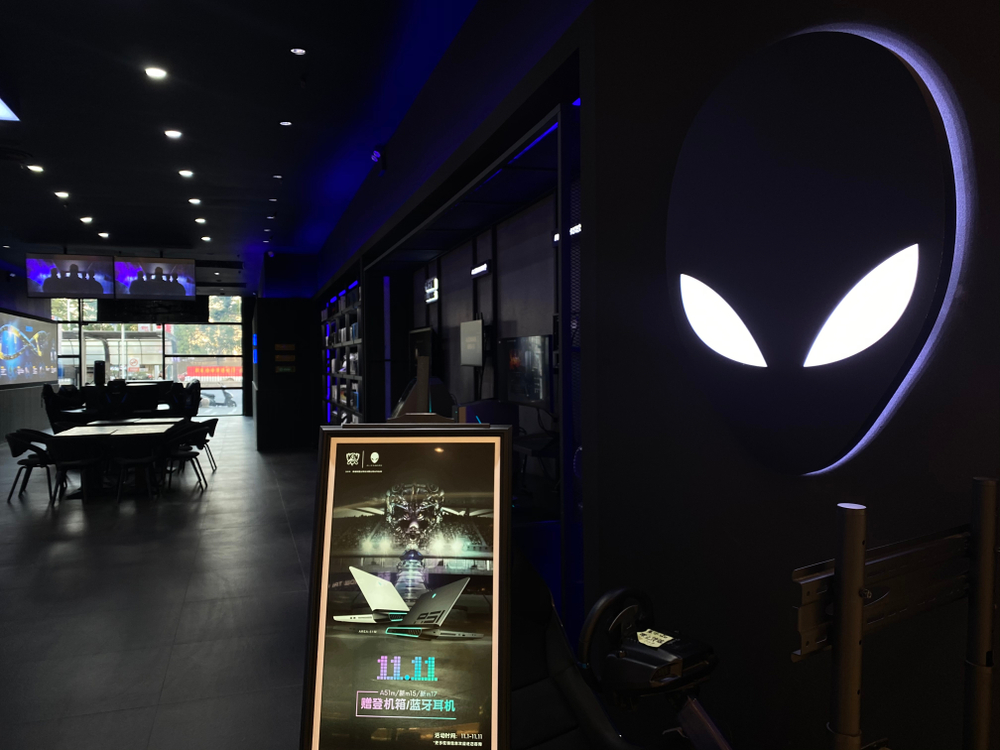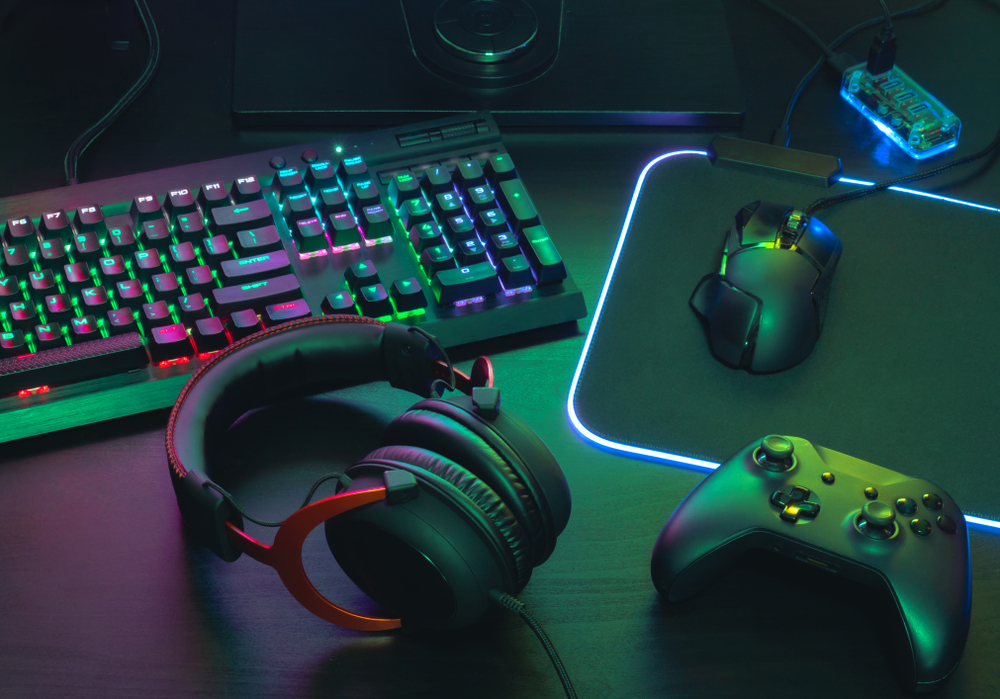5 of the Best Prebuilt PC for Gaming: A Geek’s Guide
Looking to take your gaming gear to a new level or do you have a gamer on your Christmas list? While in the past it was basically a necessity to build a custom computer for gaming, prebuilt PC options have come a long way and now you can get a lot of the oomph you’re looking for without having to hunt down those individual components.
Good news for gamers – component shortages have eased, allowing you to snag a prebuilt gaming PC with a top-tier graphics card without breaking the bank or waiting an eternity for delivery. The tech world is buzzing with recent CPU releases. AMD’s Ryzen 7000 processors have raised the bar for gaming performance, while Intel counters with their 13th Gen “Raptor Lake” chips, offering striking value for money. Some of these new desktops boast the latest DDR5 memory, while others stick with the older DDR4.
Intel’s upcoming 14th Gen “Raptor Lake Refresh” chips slated for a mid-October release will likely be seen in pre-built gaming PCs soon. Nvidia is making waves with their RTX 40-series cards, including the RTX 4090, RTX 4080, RTX 4070 Ti, RTX 4070, and the recently launched RTX 4060 Ti and RTX 4060. Rumors of an RTX 4050 Ti are also floating around. Some systems might still feature the co-existing RTX 30-series, though they lack certain features like DLSS 3.
Intel’s Arc A770 and A750 are shaking things up in the low-end and mid-range segments, while AMD’s high-end 7900 XT and 7900 XTX are the new powerhouses. The recent Computex 2023 expo showcased an array of new motherboards, cases, SSDs, and even experimental GPUs and motherboards with rear connectors. Expect to see these components in prebuilt PCs by year’s end.
Scroll down for our handpicked selection of the best-prebuilt PCs.
Alienware Aurora R15
The Alienware Aurora R15 just got a major cooling system overhaul, thanks to Dell. The upgrade includes a spanking new 240 mm radiator, ditching the old-school 120 mm cooler. This change is expected to significantly enhance CPU performance. Additional venting on the side also contributes to a quieter gaming experience. This beast, boasting an Intel Core i9-13900KF and a Nvidia GeForce RTX 4090, really packs a punch, storming through both gaming and productivity benchmarks.
The Aurora R15 doesn’t skimp on front-side ports. It offers a trio of USB Type-A ports, a USB Type-C port, and a 3.5 mm headphone jack. However, there’s a twist. Alienware employs a proprietary motherboard to facilitate these features, which could be a hurdle if you’re looking to upgrade the system down the line. Fear not though, the GPU, RAM, and CPU remain accessible and there’s potential for additional storage. You might not need to worry about tweaking too much, though, especially if you’ve opted for the maxed-out version.

MSI Infinite RS 13th
For those seeking the pinnacle of performance, the MSI Infinite RS 13th is a sure winner – provided you’re ready to shell out the bucks. Armed with the 13th Gen Intel Core i9 and a liquid-cooled Nvidia GeForce RTX 4090, this system affords stellar performance while maintaining hushed operation and future upgradeability. The components are standard and the case, the spacious MSI Prospect 700RL, might be excessively roomy for some. However, it comfortably houses two radiators and nine fans – a configuration that kept the system whisper-quiet during our evaluations. A keyboard and mouse come bundled, but you might want to consider better peripherals. If smooth gameplay and upgradeability are higher on your list of priorities for your prebuilt PC, even if it means sacrificing some desk space, the MSI Infinite RS 13th is definitely worth considering.
Corsair One i300
The Corsair One i300 presents itself as a compact, almost console-like prebuilt PC, featuring a remarkably small footprint of 6.93 x 7.87 inches that stands just taller than an Xbox Series X. Despite its compact size, it houses a powerhouse of high-performance components— an Intel Core i9-12900K, Nvidia GeForce RTX 3080 Ti, 64GB DDR5 RAM, and a 2TB PCIe Gen 4 NVMe SSD. The system ensures efficient cooling by drawing air through its sides and expelling it from the top, all while maintaining a fairly quiet operation. However, its compact nature presents challenges in terms of upgradability — the limited space and non-removable sides, due to attached radiators, make it a tricky endeavor.
Maingear MG-1 Silver Prebuilt PC
The Maingear MG-1 Silver presents itself as a middle-of-the-road system that impressively doesn’t compromise on providing a premium experience. The case has a distinctly high-end feel, although an enhancement in the dust filter department would be appreciated. The system stands out for its meticulously managed cables and brand-name components, which offer ample scope for future upgrades. A bonus is the absence of unnecessary pre-installed software, saving you the hassle of deleting unwarranted programs before you can dive into gaming. The one thing that users report falling short is the Solidigm P41 Plus as it appears to have subpar performance at 489.65 MBps. Fortunately, the motherboard can accommodate an additional SSD.
Lenovo Legion Tower 7i
While the Lenovo Legion Tower 7i may not initially dazzle with flashy aesthetics, its standardized parts ensure it is ripe for future upgrades. The motherboard boasts four M.2 slots, providing ample room for an abundance of storage- though one is already committed to the Wi-Fi card. The front panel is conveniently equipped with four USB Type-A ports, rendering the usual fumbling behind the system for accessory or external storage connections unnecessary. Powered by the Intel Core i9-13900KF and Nvidia GeForce RTX 4080, this prebuilt PC excelled in our gaming benchmarks. This powerful combo also promises to be a potent work machine, even though players are reporting that it did not run at the advertised RAM speeds. Instead of the marketed DDR5-5600 RAM speeds, the memory sticks ran at a lower 4,400 MHz, which could potentially impact productivity application performance. That said, for those seeking a gaming PC with a penchant for understated charm, the Legion offers a potent system with ample room for future internal enhancements.
How to Pick the Right Prebuilt PC For You
While size can matter, it isn’t always a determinant of better performance: If you’re not a fan of large desktop towers or don’t predict many future upgrades, then a smaller system with high-end components will serve you adequately.
- Prioritize securing an SSD: Your machine’s performance will receive a significant boost compared to that of a traditional HDD, especially when it has no moving parts. A minimum of a 256GB SSD boot drive, ideally supplemented by a larger secondary SSD or an exceptional hard drive for storage, is recommended.
- Choosing between Intel or AMD: Either company can provide competitive performance as long as you’re selecting a current-generation chip. Low-resolution gaming (1080p and below) often performs marginally better on Intel’s CPUs, while AMD’s Ryzen processors typically excel in tasks such as video editing, owing to their additional cores and threads. Regarding RAM, moderation is key: 8GB can suffice temporarily, but 16GB is a more optimal choice for most users. Hardcore game streamers and users working with high-end media creation involving large files may require more, although increasing RAM to 64 or even 128GB can be costly.
- Avoid purchasing a multi-card gaming rig unless absolutely necessary: For avid gamers, opting for a system with a top-performing single graphics card that fits your budget is a wiser choice. Most games don’t witness substantial performance improvements with multiple cards in Crossfire or SLI configurations, while some may even perform less efficiently, forcing you to deactivate a costly piece of hardware for the optimal gaming experience. Given these potential issues, a multi-card desktop should only be considered if a single high-end consumer graphics card cannot meet your performance requirements.
- The power supply unit (PSU) is a significant consideration: Ensure your PSU can adequately power the internal hardware, especially under overclocking scenarios. Additionally, consider whether the PSU can support future GPU upgrades and other component additions.
- Ports: The availability and type of ports can vary greatly depending on your choice of case size and expansion possibilities. Beyond the basic monitor connections, ensure your system has ample USB ports for peripherals and external storage devices. Front-facing ports are a convenient addition for devices like flash drives and card readers. For added future-proofing, consider a system with USB 3.1 Gen 2 and USB-C ports.
- Graphics cards, like Nvidia’s RTX 4090, RTX 3090, RTX 3080, and RTX 3070 GPUs, have become more accessible and affordable compared to previous months. However, ongoing supply chain issues might still require some shopping around to fulfill your desktop needs. A majority of people’s desktop purchasing decisions are governed by their budget. While occasional sale deals on big-box desktops can provide good value, you’ll be limited to the component selection of brands like HP, Lenovo, or Dell.
The advantage of a custom-built PC is the flexibility to modify the component configuration to suit your needs and budget. We’re encouraged to see an increasing number of builds using standardized parts, facilitating easier future upgrades. Keep an eye out for future releases as Intel’s Raptor Lake CPUs, AMD’s Ryzen 7000 processors, and the latest GPUs from Nvidia, AMD, and Intel are poised to bring some refreshes in the coming months.

